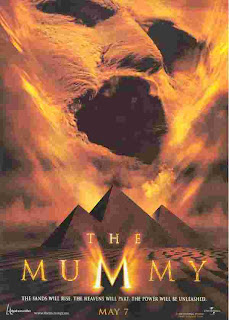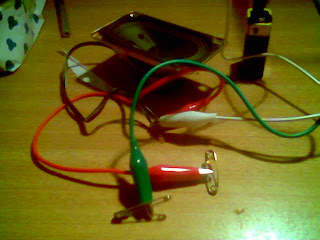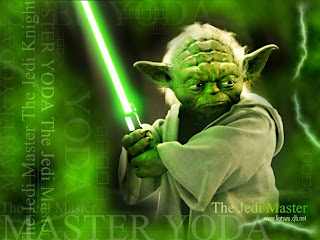Well I've gotten this far... I left it until now because I was pretty sure I was going to quit, but hey, might as well give it all a go!
So we're using Plogue Bidule to make a synthesizer. It's a pretty awesome program, it's really versatile, but hard to understand the first couple of times you try and use it.
Still learning, but I've done most of the first tutorial... I got stuck on the MIDI keyboard part because I don't have that. I'll use the university computers tomorrow and fix it all up.
I've pretty much only done what the tutorial says, because I'm not entirely sure what else to do to make it different. Not really understanding it yet. Once I finish the whole thing on the computers at Uni it'll be fine. I hope!
The tutorials are really useful and helpful! I wouldn't have got half the stuff we need to know, or what different things do without it. I sure wish every program had these. And possibly uni in general...
OK, so pictures and recordings and things... Well, because I haven't finished it entirely yet, I'll have to do it tomorrow. But you can have a picture of what I've got to so far.
And the patch.
Ok, so no picture until tomorrow either, mostly because I don't know how. Windows help is not as helpful as you'd assume.
But the bidule seems to work fine
There we go. As much as I can do until tomorrow.
Wednesday, August 15, 2007
Monday, August 13, 2007
Week 3 - AA

For this weeks task I chose to analyse a short piece of 'The Mummy'. It was released in 1999, and became a bit of a favourite in the horror scene.
My exerpt goes from 10:40 to 13:18. I chose this part, because it has a really big action scene, and then a kind of creepy part, and then goes to a really innocent simple scene. I thought it showed a lot a variety and so it would be a useful one to analyse.
The first scene is all action, set in the desert with a war of sorts going on. You can hear horses galloping, and lots of them. You can hear two different kinds of shouting, something Arabic and English/American. There's narration by a man with an arabic accent over the top, and dialogue between two characters. There is also dramatic music playing. The backgrond noise gets quieter when the two men are talking, and the music and narration are clearly non-diegetic. Even though the man narrating is present in the scene. I'd say the gunshots are foley, because they can't have been actually shooting guns on set.
The creepy part is really quiet with a sort of ambient hum in the background, that develops into jackal noises. I don't really know what to call it, because there aren't any animals, but the sound is apparently coming from a statue... sort of. So it IS sourced, so i suppose diegetic? Anyway, then some sand shoots up, and the sound of that is obviously foley, because sand wouldn't make whooshing noises like that. And the scream, well, it's been edited and added in over the top, but I don't know exactly what to call that.
The really innocent scene has lively Egyptian music and the sound of a busy city at first. Then a female voice starts talking before the audience can actually see her. I think it's a good effect. Other than that, most of the sound seems pretty average. It's just her talking to herself, and echo noises. Seems fair though, because she's in a big library.
I think this exercise has helped me realise how much there is in making sound for movies. There's so many things that you have to take into consideration.
_________________________________________________
Christian Haines - Audio Arts Lecture, 7/8/07
The Mummy film, copyright 1999, Universal Studios
Monday, August 6, 2007
Week 2 - AA1.2

This week was a fairly simple week for the task. Unfortunately, I can't upload the zip file telling me what exactly to do, so I'm just going to do as much as I remember and hope for the best. The idea was to record some sound from the environment, whether a pool hall, park or shopping centre, and then draw a geographical map showing where everything is sound wise. My recording is pretty shocking, but I decided to keep it anyway, and just make sure I use the university recorders from now on. It was done in a popular cafe in the morning. You can't hear all the sounds on the recording I made, but I'll be putting all of them into the map. Again, because I can't open the .zip file I'll just have to go on memory to make the map, but I'm pretty sure it'll be fine.
The map is shown at the top of the post. I'll explain the symbols here, as opposed to making another picture with a key on it. Easier to read I thought.
1: the X marks my position in the room.
2: the diagonal lines represent an electrical hum, quite low, and as shown, heard in various parts of the room. There was also the same sort of sound heard outside the room, which is why I used the arrow.
3: the rectangular boxes represent a clanging, banging noise, again heard in multiple places in the room. It was a mechanical, metallic noise.
4: the swirls denote conversations and people talking and making noise in general. The thicker the lines the louder the person was or the closer they were to me.
5: the jagged, step-like line is footsteps. Everynow and then someone would walk past, and the sound of their feet is quite loud. The floor sounded hollow.
6: the wavy line under the arrow was a scraping, harsh noise, probably chairs on the ground or soemthine similar. It was outside again, but the sound was definitely similar to the sound made when metal chairs are scraped across a hard surface flooring.
And last but not least the actual recording, although as I said before, it's really bad. From now on, I'll be using the university recorders.
Recording of cafe environment
______________________________________________________________________________________
Christian Haines, Audio Arts lecture, Tutorial Room, Schulz, 31st/7/07
Wednesday, August 1, 2007
Week 1 - Forum

This week's music tech forum task was to make a speaker make noises by attaching leads to a battery and touching different metal things. To do that, you attach 2 different leads to the positive and negative side of the battery. Then attach one of them to the leads of the speaker and with the other touch the other side of the lead. It makes the speaker pop up each time it happens, so the aim is to do it repeatedly and get it to go fast enough to make a sound. That's the simple part. After I mastered that, I started looking for other objects to test.
After using the suggested paper clips and getting really carried away with that, i moved on to some safety pins. I was wondering if the separated metal bits would have any effect... They didn't really, but it was still something I wanted to test.
I also tried them on the speaker itself, which made a horrid screechy sound. It was interesting though. The recording of it is a bit dodgy, but you can still hear what I did. First of all it's just me touching the two safety pins together and then it's them both on the actual speaker cone. You can hear it below:
Safety Pin Scratch
_____________________________________________________
Sunday, July 29, 2007
Week 1 - AA1.2
 (picture from www.transport.polymtl.ca/.../RIVERA-TAMA/)
(picture from www.transport.polymtl.ca/.../RIVERA-TAMA/)For this week I chose my analysis of sound design to be on the sound of the lightsabers in the Star Wars movies. Everyones heard the sound but for reference, I have a clip on youtube of DarthVader and Luke Skywalker battling it out.(*1) Here: >> STARWARS LIGHTSABERS <<
You only need to watch the first 30 seconds or so to get the basic gist.
I consider it sound design because the producers and sound engineers had to come up with a sound for something that doesn't exist. So they had to DESIGN a sound that fit a certain criteria and general imagined idea. It's purpose would be to make a distinctive and memorable sound that fits and compliments the action and idea of a lightsaber. More simply, they needed a sound that a) was easy to remember and b) easy to associate with a giant, deathly, futuristic laser.
It's clearly quite an electrical sound, and generated on a computer. I found that "the original sound effect was created using a mix of an old projector’s hum and the warm feedback from a microphone passing an old television set.(*2)" It isn't a pretty or beautiful sound, but personally I think it has certain elements that make it pleasant to the ear. Like the harmonics and the tones of it. It definitely seems to fit the idea of a giant laser beam, and has become the standard sound for other movies and productions with the same idea.
___________________________________________________________
(*1) Youtube video of Star Wars Episode VI, by roboperson, accessed 29th July, 2007
(*2) The Lightsaber Sound Effect, Blue Distortion http://www.bluedistortion.com/2005/09/17/lightsaber-sound-effect/ last updated September 17, 2005
Wednesday, June 27, 2007
Audio Arts Final Project
My ORIGINAL final project was a grunge rock band, but that one got deleted so my NEW final prject is a jazz quartet from the university. The song they're playing is called Oleo, and the actual song is 5 minutes long. Luckily for you, I faded it out at 3 minutes, but if you would like to hear the full version, feel free to ask.
The song is mostly improvised which made things a lot easier for me, and being jazz, didn't require a whole lot of producing.
No major troubles were encountered during this exercise, apart from the obvious one of losing my entire project. So despite the steep learning curve this semester has been, I think I've been successful in completing the task.
So here are all the final products! ::
PDF FILES OF DOCUMENTATION
OLEO
The song is mostly improvised which made things a lot easier for me, and being jazz, didn't require a whole lot of producing.
No major troubles were encountered during this exercise, apart from the obvious one of losing my entire project. So despite the steep learning curve this semester has been, I think I've been successful in completing the task.
So here are all the final products! ::
PDF FILES OF DOCUMENTATION
OLEO
Tuesday, June 26, 2007
Creative Computing - Final Project
Program Note :
Speaking In Tongues :-
Amy Sincock
2`04
This composition was made using vocal reproductions of mobile phone conversation’s heard on the bus, or in Rundle Mall. They were reproduced by Meghann Sunners and Sarah Melrose. The material was heard and noted, and re-recorded later in a studio. Not only the words, but also tone of voice, pauses, and dynamics of the caller were noted. Also recorded were standard ringtones of a Nokia phone. The idea for this project came after being on a crowded bus in which 7 phone conversations were taking place. The fact that it is a very distinct mash of sound that people don’t even seem to notice was interesting and I wanted to highlight this. Most of the piece is simple and hardly edited, because I wanted to keep it fairly similar to the actual sound you would hear. Some effects were put on the vocals to further emphasise the confusion and unintelligible effect of the conversations.
SCORE FOR SPEAKING IN TONGUES
And the final piece of music itself:: SPEAKING IN TONGUES
Over and out, happy holidays!
Speaking In Tongues :-
Amy Sincock
2`04
This composition was made using vocal reproductions of mobile phone conversation’s heard on the bus, or in Rundle Mall. They were reproduced by Meghann Sunners and Sarah Melrose. The material was heard and noted, and re-recorded later in a studio. Not only the words, but also tone of voice, pauses, and dynamics of the caller were noted. Also recorded were standard ringtones of a Nokia phone. The idea for this project came after being on a crowded bus in which 7 phone conversations were taking place. The fact that it is a very distinct mash of sound that people don’t even seem to notice was interesting and I wanted to highlight this. Most of the piece is simple and hardly edited, because I wanted to keep it fairly similar to the actual sound you would hear. Some effects were put on the vocals to further emphasise the confusion and unintelligible effect of the conversations.
SCORE FOR SPEAKING IN TONGUES
And the final piece of music itself:: SPEAKING IN TONGUES
Over and out, happy holidays!
Subscribe to:
Comments (Atom)